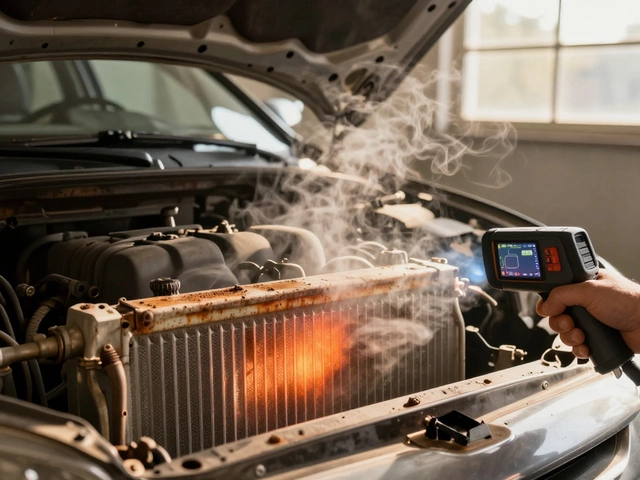Everything You Need to Know About Spark Plugs
If you’ve ever wondered why your car sometimes feels sluggish or why the engine makes a strange rattling noise, the answer often lies in the spark plugs. These small metal pieces fire the fuel‑air mixture in each cylinder, and when they’re healthy, the engine runs smooth and efficient. In this guide we’ll cover why spark plugs matter, the signs they need attention, and how to replace them yourself.
Why Spark Plugs Matter
Think of spark plugs as the heartbeats of your engine. Each time a plug sparks, it ignites the mixture that pushes the piston down. A healthy spark means maximum power, better fuel economy, and lower emissions. When a plug wears out, the spark weakens, causing misfires, rough idling, and a drop in acceleration. In extreme cases a bad plug can even prevent the car from starting.
Modern cars use iridium or platinum plugs that last longer than the older copper types. However, even the best plugs have a lifespan—typically between 30,000 and 100,000 miles depending on driving habits and engine design. Heat, oil fouling, and poor fuel quality are the main culprits that shorten plug life.
When & How to Replace Spark Plugs
Spotting a failing plug early saves money and headaches. Look out for these symptoms:
- Engine sputters or hesitates during acceleration.
- Rough idle or frequent stalling.
- Check‑engine light flashes, especially code P0300‑P0306.
- Decrease in fuel mileage.
- Visible cracks, carbon deposits, or oil on the plug tip.
If you notice any of these, grab a socket set and replace the plugs. Here’s a quick step‑by‑step:
- Let the engine cool for at least 15 minutes.
- Disconnect the battery’s negative terminal (optional but safe).
- Remove the spark plug wires or coil packs—watch the order so you can put them back correctly.
- Use a spark plug socket and ratchet to loosen each plug. Turn counter‑clockwise and pull out gently.
- Check the gap on the new plug with a feeler gauge. Most modern plugs come pre‑gapped, but it’s worth confirming.
- Apply a small amount of anti‑seize compound to the plug threads (only if the manufacturer recommends it).
- Screw the new plug in by hand to avoid cross‑threading, then tighten with the socket to the torque spec—usually around 13‑18 ft‑lb.
- Reconnect the wires or coil packs in the same order you removed them.
- Reconnect the battery, start the engine, and listen for a smooth idle.
The whole process takes roughly 30‑45 minutes for a four‑cylinder engine and a little longer for V‑6 or V‑8 layouts. No special tools beyond a socket set are needed, making it a perfect DIY job.
After replacement, you’ll likely notice a perkier throttle response, a steadier idle, and maybe even a few extra miles per gallon. That’s the real payoff—better performance without spending a fortune on a mechanic.
Remember, regular checks are key. Flip your engine’s maintenance schedule to include spark plug inspections every 30,000 miles, or follow the manufacturer’s recommendation. A quick visual check during oil changes can catch fouling before it turns into a costly misfire.
So the next time your car feels off, think about the spark plugs. They’re cheap, easy to replace, and can make a huge difference. Keep them clean, replace them on schedule, and enjoy a smoother ride.

Will Replacing Spark Plugs Make a Noticeable Difference?
Learn how changing spark plugs impacts power, fuel economy, and idle smoothness. Find signs of worn plugs, compare copper, platinum and iridium options, and get step‑by‑step install tips.
CONTINUE READING
How Long Can a Car Go Without Changing Spark Plugs?
Wondering how long you can drive without changing your car's spark plugs? This article breaks down the real mileage you can push before running into trouble, what signs to watch out for, and why skipping this simple bit of maintenance can cost you way more down the line. Get straightforward advice and tips to avoid common spark plug problems. We'll also explain why modern cars can go longer than older models, but still aren't invincible. Discover the exact numbers and tips from the garage so your car—and wallet—don't get burned.
CONTINUE READING
Understanding What Shortens Spark Plug Life
Spark plugs are essential for your vehicle's engine performance, but their lifespan can be cut short by various factors. Common culprits include excessive heat, oil fouling, and poor fuel quality. Simple maintenance tips can help extend their life. Paying attention to warning signs can save both money and hassle in the long run.
CONTINUE READING











